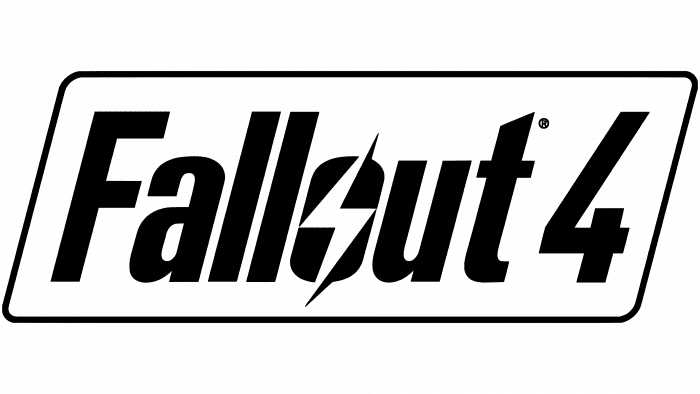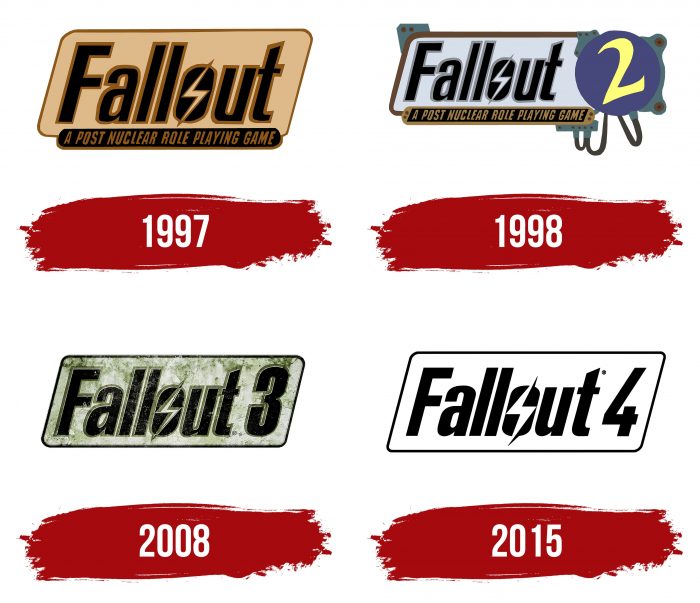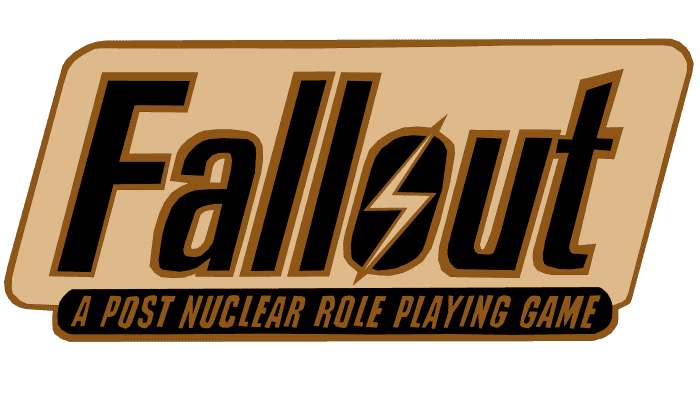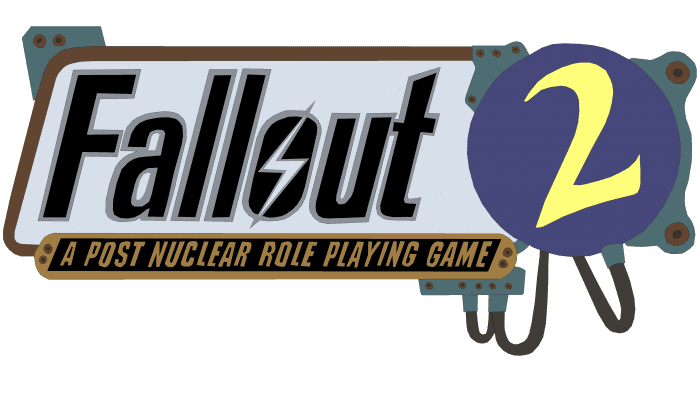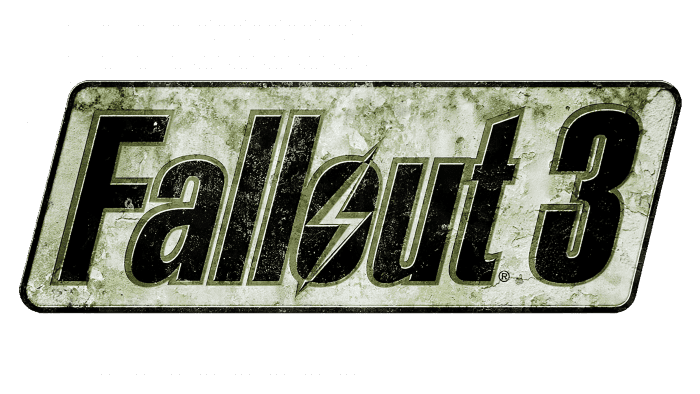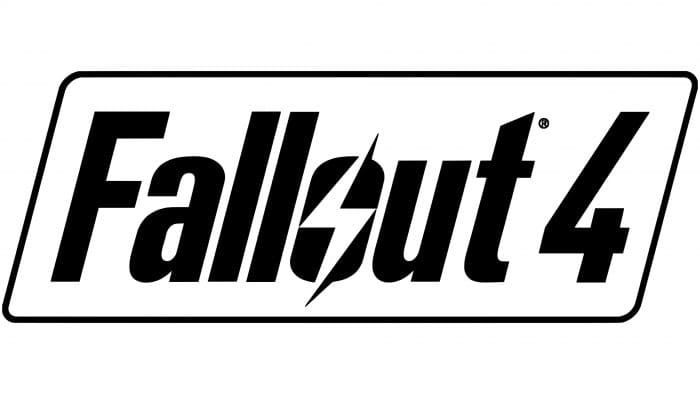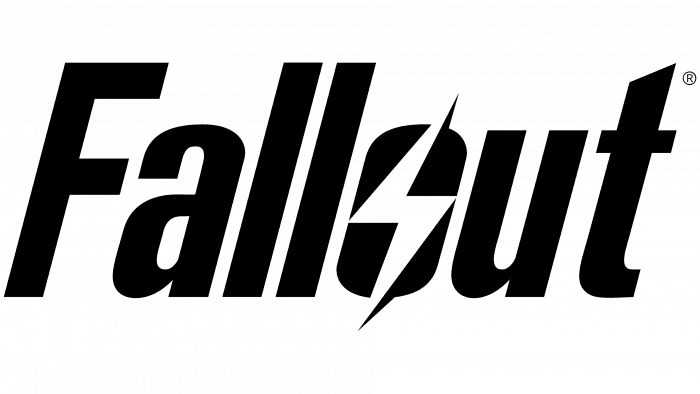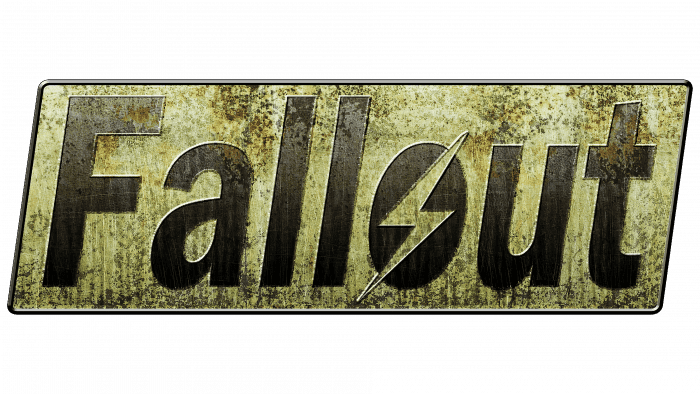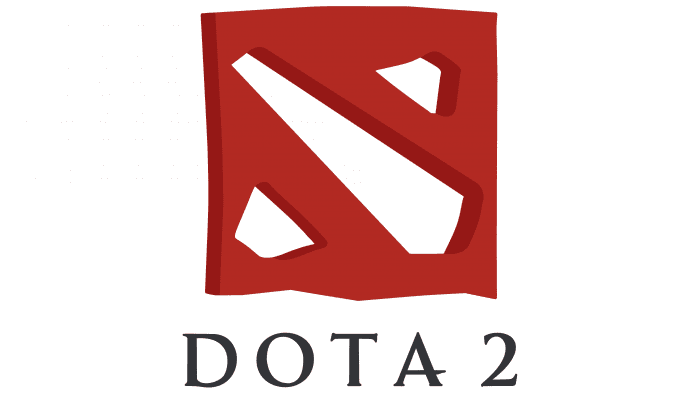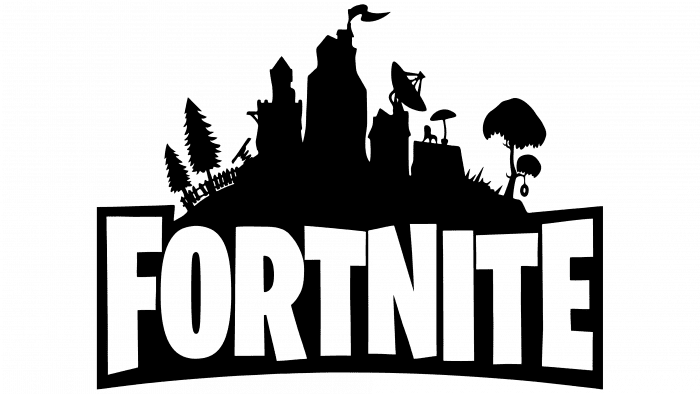Sharpness and tension soar in the symbols of the emblem. The Fallout logo showcases the enclosed space, dark designs, and complex challenges that unfold before the player. The main thing is to move forward and not stop.
Fallout: Brand overview
| Founded: | October 10, 1997 |
| Founder: | Interplay Entertainment |
| Headquarters: | United States |
The Fallout video game series plot takes place in a post-apocalyptic world where the protagonist has to survive, complete his mission, and thwart radiation mutants’ plans. Interplay Entertainment developed the first part (1997), and Black Isle Studios developed the second (1998). They practically did not differ, except for the detail of the game universe.
The new millennium has seen the transition from isometric RPG to open-world action / RPG. And all thanks to Bethesda, which bought the Fallout license and created two more parts: the third (2008) and the fourth (2015).
Meaning and History
The Fallout was originally planned as a sequel to the post-nuclear RPG Wasteland, but the developers could not obtain permission from the owner. So they had to come up with a plot, name, and emblem for the RPG from scratch, although the new series of video games remained the spiritual successor of Wasteland. The dark atmosphere of the post-apocalyptic world is reflected in the logos of all four Fallout games.
What is Fallout?
Fallout is a series of RPG video games that debuted in 1997. Since then, numerous main entries and expansions have been released, all sharing a common storyline. The plot is based on survival in a post-apocalyptic world. Players must complete various tasks, fight enemies, and compete for resources to survive on a planet devastated by nuclear war. Bethesda Softworks has been the publisher of the series since 2004.
1997
The emblem of the first game, released in 1997, contains its full name. The inscription “Fallout A POST NUCLEAR ROLE PLAYING GAME” is depicted on a rectangular plaque, with the first word taking up the main space and the rest at the bottom. The text is supplemented with two pictures: a radiation hazard symbol and a gas mask. They hint that the action takes place in a fictional universe that has survived a nuclear war.
1998
In 1998, the second part of the series appeared, and with it a new logo. It is similar in shape to the previous one, except that the designers removed the background rectangle and left the inscriptions inside two parallelograms with partially rounded corners. A voluminous purple circle with the number 2 appeared on the right. This emblem in design resembles not the usual plate but a metallic and shiny part of the mechanism.
2008
Fallout 3 was released after Bethesda acquired the license for a series of post-apocalyptic video games. The new developer has changed the design of the fictional universe and the design of the logo. He removed unnecessary details and left a single parallelogram with a black border and the words “Fallout 3” on a dappled background.
2015
The Fallout 4 emblem contains a title for the game that doesn’t look 3D for the first time. The lettering is inside a white rectangle with rounded sides. The outer border is outlined with a thin black line.
Each part of Fallout has its distinctive mark. But if in the first version it was a complex drawing with a lot of colors, details, and inscriptions, then by 2015, the design had become much simpler. The developers followed minimalism, leaving only the game’s main title and white background with a frame.
Fallout: Interesting Facts
The Fallout video game series is popular for its post-apocalyptic world, engaging stories, and unique humor.
- Beginnings and Ideas: Fallout was created by Interplay Entertainment in 1997. It was supposed to use the GURPS system but ended up with its own, called SPECIAL.
- A Different Future: The game’s world split from ours after WWII, imagining a future as the 1950s expected. This mix of old-style culture with future tech, like robots and energy weapons, is a big part of its charm.
- Vaults: Vaults are big underground shelters that protect people from nuclear war. However, players find out many were actually for secret experiments.
- Nuka-Cola: A drink inspired by Coca-Cola, Nuka-Cola is everywhere in Fallout. It’s a big part of the game’s world and comes in many versions.
- Pip-Boy: This device, which players wear on their wrists, helps them manage their items, maps, and information. Its design is both old-fashioned and futuristic.
- Ron Perlman’s Voice: Ron Perlman voices the opening lines in most games, starting with “War. War never changes,” highlighting the endless cycle of conflict in Fallout’s world.
- Super Mutants: These enemies were once humans changed by a virus. They show the dangers of misusing technology.
- Music: The soundtrack features music from the 1940s and 1950s, creating a striking mood against the game’s ruined world.
- Mods: Players love making mods for Fallout, which add everything from visual upgrades to new stories and make the games even more enjoyable.
- Cultural Influence: Fallout’s impact goes beyond games, inspiring other media like board games and novels. Its themes of survival and adventure have made it a beloved part of video game history.
Fallout combines science fiction with 1950s nostalgia, creating a world that’s fun to explore and full of depth.
Font and Colors
The word “Fallout” is written in italic sans-serif type in all logos. Its main features are the uneven stroke width, the truncated top “t,” and the lightning bolt inside the “o.” The lettering resembles Overseer Oblique, but only because typographer Neale Davidson used Fallout emblems to create a neo-grotesque font family. The proportions of the characters are balanced; the letter spacing is minimal.
The color palette of the first three logos contains dark and cool tones. The designers chose brown, black, gray, and purple shades for the main role, adding a gradient and light highlights. In this regard, the Fallout 4 icon is noticeably different because it is monochrome. It combines only two colors: black and white.
Fallout color codes
| Black | Hex color: | #000000 |
|---|---|---|
| RGB: | 0 0 0 | |
| CMYK: | 0 0 0 100 | |
| Pantone: | PMS Process Black C |
